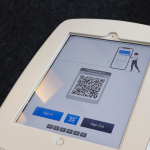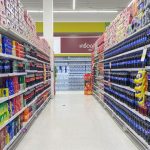Boxed packaged goods are a great way to stock up on your favorite items and ensure that you have enough for long-term storage. However, it is important to know how to store them properly and make the most out of them.
boxed packaged goods allow shoppers to purchase a variety of items in one convenient package. This is especially useful for people who have limited time or have difficulty getting to the store. With boxed packaged goods, you can get all the items you need in one go and have them delivered directly to your door.
This can save time and money compared to traditional grocery shopping, as well as providing convenience and flexibility for those who need it. This article will provide tips and tricks on how to store boxed packaged goods in order to maximize their shelf life and use.
Also Read: Bagged Packaged Goods- Why to Choose, Advantages & Disadvantages
What are boxed packaged goods?
Boxed packaged goods are products that have been securely encapsulated in a box for easy transport and storage.
Boxed packaged goods are pre-packaged food items that are ready to be consumed. They come in a variety of sizes, shapes, and flavors. These products are usually sold in supermarkets, convenience stores, and other retail outlets. They provide consumers with convenience and easy access to food items that would otherwise require more preparation or cooking time.
Boxed packaged goods offer a wide range of options for consumers, from simple snacks to full meals. Moreover, they can help reduce food waste as they come with expiration dates and can be stored for longer periods of time without spoiling.
Boxed packaged goods are a great way to stock up on food items and other essentials for long-term storage. However, it is important to know how to make the most out of these boxed items.
The Different Types of Boxed Packaged Goods Available on the Market
With the ever-growing selection of packaged goods available on the market today, it can be hard to keep track of all the different types. From frozen foods to shelf-stable items, there is a wide variety of products that come in boxes or packages.
Types of packaging boxes
Cardboard box Packaging
Cardboard boxes are one of the most popular and widely used types of packaging. They are made from recycled paper, cardboard, or other materials and can be used to store or transport a variety of items. Cardboard boxes come in a range of sizes, shapes, and thicknesses depending on their intended purpose.
They are also easy to customize with different printing techniques and can be used for promotional purposes. Cardboard boxes are an economical choice for businesses looking to package their products in an efficient and cost-effective manner.
It is easy to create a promotional cardboard box by using a die-cut machine and creating custom measurements. These boxes can also be made from recycled cardboard and can be used for events as well as promotional campaigns. Customizable boxes are often used for shipments of food, clothing, or products that need to be shipped in a regular box with smaller dimensions.
Also Read: What are Tubed Packaged Goods- Types, Advantages & use cases?
Corrugated box Packaging
Corrugated boxes are one of the most widely used types of packaging boxes. They are made from corrugated paperboard which is lightweight and strong, making them ideal for transporting a wide range of products. Corrugated boxes can be used for shipping, storing, and displaying products in retail stores.
They are also used for packaging food items, electronics, furniture and other fragile items. By using corrugated boxes, businesses can reduce their packaging costs while ensuring that their products arrive safely to their destination.
Corrugated cardboard is made from a light-weight, paper-based material and consists of many parallel ribs that, when rolled together, form flutes or corrugations on both sides of the material.
There are two types of corrugated boxes: interleaved corrugated (where the ribs alternate) and solid corrugated. The first type is used for shipping longer items that require more protection, while the latter is used for shorter items that require less protection.
Paper box packaging
Boxed packaged goods are products that come in a paper box packaging. This type of packaging is used for a variety of products including food, beverages, electronics, and other consumer goods. It provides protection from external elements and also helps to keep the product safe during transportation.
Paper box packaging is also cost-effective and can be easily customized with logos or other designs. It is lightweight and can be recycled, making it an environmentally friendly option for businesses looking to reduce their carbon footprint.
Wooden box Packaging
Wooden boxes are one of the most popular types of packaging boxes used for a variety of purposes. They are durable, lightweight and provide excellent protection against damage during transport. Wooden boxes can be used to store items such as food, electronics, clothing and other goods. They also come in various sizes and shapes to accommodate different products and can be customized with logos or designs to make them more attractive.
Wooden boxes are also eco-friendly as they are made from renewable resources such as wood. In addition to the benefits of wooden boxes, they also have added features that make them highly desirable. Wooden boxes are often sealed with multiple coats of paint to prevent moisture accumulation, which is ideal for items such as electronics.
The tight quality control ensures a better final product, and therefore customers can be confident in their products being delivered safely and securely.
Plastic box packaging
Plastic box packaging is an essential part of any business’s product marketing strategy. It provides a protective layer for the product, increases its visibility on shelves, and helps to maintain its quality. With the right design and material, plastic boxes can also help to reduce shipping costs and increase efficiency.
Plastic boxes come in a variety of shapes and sizes, from small rectangular boxes to large cylindrical containers. They are typically made from polystyrene or polypropylene and can be customized with different colours, textures, and designs. Depending on the type of product being packaged, they can be used for shipping or storage purposes. In addition to this, they are also used in retail stores as display cases for products such as cosmetics or jewelry.
Also Read: Bottled and Jarred Packaged Goods- Types, Pros and Cons
Useful Techniques for Packing and Repackaging Packaged Goods
Packing and repackaging packaged goods is an important process for many businesses, as it ensures that products are safely stored and transported. It also helps to reduce waste, since the packaging materials can be reused multiple times. In order to pack and repackage efficiently, there are several techniques that should be employed.
These include using the right materials for the job, properly labeling packages, and using suitable packing methods. Additionally, businesses should consider investing in automated packing machines or other technologies to help streamline the process. By utilizing these techniques, companies can ensure their products are packed securely while also reducing costs associated with packaging materials.
Ergonomics:
Ergonomics refers to the way in which a product is designed. This can include convenience, ease-of-use, and even product safety. Companies that create ergonomic products are likely to see increased sales and fewer injuries or other problems with their product.
Packaging Materials:
Packaging materials such as Styrofoam, Kraft paper, bubble wrap, and air bags are used to protect products during shipping while preventing damage from occurring during transit. Packages made of these materials can be reused multiple times as well.
For many packing materials, a manufacturing process must be followed in order to create the product. While there may be a cost associated with this process, it can help to reduce waste and increase efficiency. Additionally, some materials are durable and reusable, which is useful for companies that want to use their packaging materials multiple times.
Inventory Management:
Inventory management refers to how efficiently a business tracks, controls, and sells its products. This activity is generally determined by sales and inventory levels. By determining how much product is needed to maintain a steady flow of sales, inventory levels can be optimized in order to minimize the amount of time it takes for products to sell out.
Package design :
Package design refers to how a package is designed with the intent to appeal to consumers.
Packaging:
Packaging is the physical packaging of tangible goods for delivery and storage. It can be as simple as individual wrapping on a product or as complex as a fully-assembled product that goes through production, distribution and retail sales channels before reaching the final destination.
Tips for Storing Boxed Packaged Goods for Optimal Shelf Life
Storing boxed packaged goods properly is essential to ensure that they remain fresh and retain their original quality. Proper storage techniques can help maximize the shelf life of boxed packaged goods, allowing consumers to enjoy them for longer. Here are some tips on how to store boxed packaged goods for optimal shelf life:
- Be sure to have enough room in your fridge and freezer for all the food that you purchase or need, and make sure you store it appropriately in airtight containers or bags before packaging it.
- Rotate your stock regularly so that older products are used first before newer ones expire or go bad due to improper storage conditions.
- Keep the product away from any sources of heat or moisture, such as stoves, radiators, humidifiers, etc.
- Make sure that the boxes are sealed tightly before storing them away in a cool and dry place.
- Use airtight containers or bags when storing boxed items for long periods of time to prevent spoilage and contamination from outside elements like dust or insects.
- Label all stored items with their store dates and expiration dates.
- Check the condition of your food to see if it needs to be discarded, recycled, or donated before buying replacements with your next shopping trip
- Purchase products with a longer shelf life that can be stored for long periods of time such as canned goods, pasta, and rice so they last over a few months or years depending on how often you plan on using them.
Conclusion: How Does Boxed Packaged Goods Help With Grocery Shopping?
The grocery shopping experience is changing with the emergence of boxed packaged goods. Pre-packaged food boxes are becoming increasingly popular with consumers who are looking for convenience, cost savings, and variety when it comes to their grocery shopping.
Also Read: How to Navigate to the closest grocery Store for your Shopping Trip
Bulk grocery delivery services have also become a viable option for those who don’t want to go to the store or don’t have time to shop in person. Online stores are also offering a wide range of pre-packaged food boxes, allowing customers to easily order what they need with just a few clicks. With all these options available, it’s no surprise that boxed packaged goods are quickly becoming the new trend in grocery shopping.

We are a team of enthusiastic people who want to share our experience, knowledge and enterprise with the world. We love what we do and we hope you will too!. We pride ourselves on being the global leader in developing Techspurblog as a technology blog, which can create original content.






